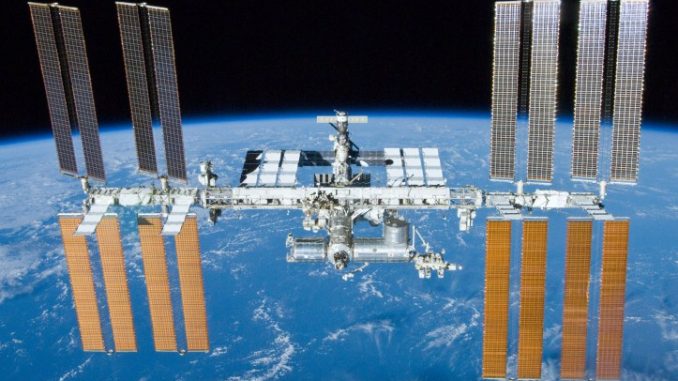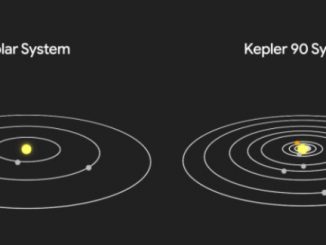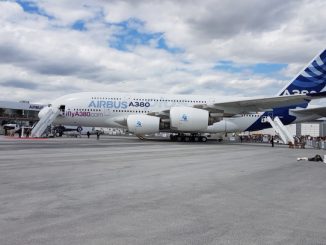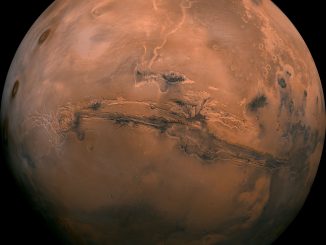
The European Space Agency (ESA) has put online an application that allows you to visit one of the most secret places in the world, the International Space Station (ISS). In the same way as Google Street View, it is possible to navigate from module to module, and to visit in 360 ° each module of the ISS.
Visit the International Space Station
Using the directional arrows, it is possible to navigate in most modules like Zvezda, Zarya, Unity, Destiny, Harmony, Columbus and Kibo. During each visit to a module, it is also possible to click on specific points to display a video, where Italian astronaut Samantha Cristoforetti explains in detail the material that makes up the station. I think it’s a good initiative to make the ISS visit accessible and explain the role of the ISS.
The ISS is currently the largest space station in service. The station is 109 meters long, 73 meters wide and weighs 419 tons. Dozens of modules were put in place between 1998 and 2011. The construction of this station should be completed in 2017. The station’s living space is 388 cubic meters. The construction of this station cost $ 150 billion.
The ISS consists of a Russian and a Western part, financed by the United States (76.6%), Japan (12.8%), Europeans (8.3%) and Canada (2.3%). The space station is managed by five space agencies:
- NASA (United States)
- Roscosmos (Russia)
- ESA (Europe)
- JAXA (Japan)
- ASC (Canada)
There have been 228 astronauts who have stayed in the ISS since it was inhabited sixteen years ago. The Americans (astronauts) and the Russians (cosmonauts) make up the majority of them because the United States and Russia finance the majority of the program.
To get to the ISS from Earth, astronauts could use either the US Space Shuttle, propelled to Cape Canaveral, Florida or the Russian Soyuz spacecraft launched from Baikonur, Kazakhstan. However, since 2011, the US shuttle has been decommissioned and the only way to reach the ISS is the Russian Soyuz spacecraft. This dependence of the United States on Russia is due to end in 2017 with the manned flights of the Boeing and SpaceX capsules.
The ISS is in fact a huge space science laboratory where experiments can be performed in unprecedented conditions taking advantage of the microgravity of the station. French astronaut Thomas Pesquet, is the tenth Frenchman from space, he will have to carry out a series of scientific experiments on behalf of NASA and another series on behalf of ESA. These experiments will mainly concern health and medicine.
Seven experiments have been proposed and financed by the CNES (National Center for Space Studies) and which are:
- Fluidics is a fluid dynamics experiment in space.
- ECHO is an experimental remote operated ultrasound system.
- Aquapad is an equipment to easily determine if the water is drinkable.
- Everywear is a tablet software that easily collects data from Bluetooth-connected portable biomedical sensors that measure astronaut physiological parameters on a daily basis.
- MATISS is a smart surface experiment to prevent bacteria from settling and growing.
- Prospectives is a virtual reality headset designed to measure the impact of weightlessness on cognitive functions.
- Exo-iss are three educational experiences developed in collaboration with high school students.
Like all other astronauts, he will also have station maintenance tasks to perform.
In case of trouble, two Russian Soyuz ships are permanently docked to the International Space Station. For example, if several supplies fail, causing a shortage of food or there is a major breakdown that puts the crew at risk, they can use both ships to evacuate and return to Earth safe and sound. The station is fully controllable from the ground.
For the future of the ISS, the station will remain operational at least until 2024, but as the program becomes very expensive, there will be a gradual disengagement of public finances to move towards public-private co-management. Wear and tear at the station also suggests that the station will surely be dismantled and resold for private entities. The ISS may be replaced by the construction of a station in a ciscular orbit, that is, an orbit around the Earth-Moon pair.
The rise of private funding, as with SpaceX, will enable NASA to finance ambitious projects such as the return of the Moon and the manned missions to Mars.
NASA unveiled a video shot in Ultra High Definition (4K) that makes us visit the ISS.





Be the first to comment